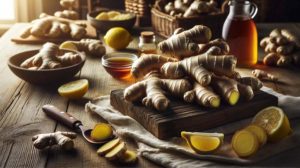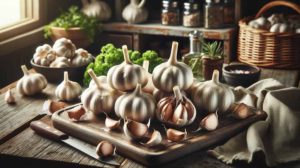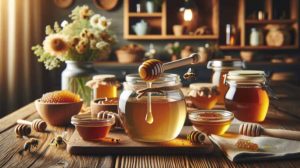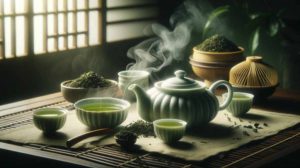Your immune system works better when you eat well, and it can get weaker if you don’t. Pathogens can hurt plants just like they can hurt people. Since plants can’t run away, they use chemicals to get rid of and kill bacteria, viruses, and fungi that are bad for them. When you eat these plants, you take in some of these chemicals that your immune system can use. So, food is one of the best natural ways to treat a cold.
Antioxidants are a type of plant nutrient that helps the immune system and are important for preventing disease. Even though antioxidants are found in all foods, plant-based foods have 64 times more antioxidants on average than animal-based foods. Whole plant foods also have micronutrients like zinc, vitamin C, vitamin A, and others that have been shown to protect against getting sick from viruses.
Even though a varied diet of whole plant foods is great for immune health, there are a few “immunity superstars” that science has shown to lower the risk of infection and help the body heal after getting sick with a virus.
Here are seven foods that you should eat regularly:
1. Ginger:

Ginger has been used to treat colds and flu for a very long time. It also has many other health benefits. Ginger can stop viruses from attaching to cells because it is a powerful antioxidant and anti-inflammatory. It can also stop the growth of viruses that get past the body’s defenses.
You can chop ginger into dishes like curries, stir-fries, and soups, or you can grate the root, steep it in hot water, and drink it as a tea.
2. Garlic:

Garlic and other plants in the allium family keep pests away due to their strong smells that they don’t like. Allicin is the one that gives garlic its smell, and research has shown that it is effective against multidrug-resistant strains of E. coli, Candida albicans, and a number of parasites and viruses that live in the human gut.
Garlic can also stop and treat a number of viral infections. Raw cloves can be eaten (cut them up or smash them and then let hem sit for 10 minutes before ingesting; the damage triggers the formation of allicin). You can also use raw or cooked garlic in dips, spreads, salad dressings, pasta dishes, and other foods.
3. Honey:

Because honey kills germs, it never goes bad if it is kept in the right way (archeologists have found perfectly delicious 2,000-year-old honey in excavated Egyptian tombs). It also fights free radicals and inflammation, which makes it a powerful immune booster.
Even though honey has a lot of sugar in it, it stops bacteria, fungi, and viruses from growing and spreading. This may be partly because honey has a lot of polyphenols and other healthy substances.
If you want to use honey, you can put it on roasted vegetables, put it in smoothies, or use it to sweeten oatmeal.
4. Turmeric:

The main active ingredient in turmeric root is curcumin, which has antiviral effects against a wide range of viruses, including COVID-19. It can also help people feel less tired, which could be useful for managing long COVID.
Curcumin may also help with cold, flu, and other virus symptoms, like coughing and swollen mucous membranes. When you mix turmeric with black pepper, you get even more benefits because black pepper can make curcumin much more bioavailable.
Turmeric can be made into drinks like tea, golden milk, and smoothies. The spice powder can be added to dishes like curries, stir-fries, and roasted vegetables. It’s also a great way to give scrambled tofu flavor and a yellow color.
5. Tea or any other warm drink:

Any warm drink can help you feel better by getting rid of cold symptoms, keeping you hydrated, and keeping your body temperature stable. When you’re trying to stay healthy around airborne pathogens, tea, which is a drink made from the leaves of the Camellia sinensis plant, is especially helpful. There are black, green, and white teas in this category.
Catechins may stop the flu virus from sticking to the cells in your mucous membranes (a process known as adsorption). The catechins also can stop the virus from replicating and made the body more resistant to viral infections. You don’t even have to drink tea to get the benefits of catechins. Some cold viruses can be stopped by gargling with them.
With its high level of antioxidant polyphenols, green tea has been shown to help stop the common cold. And both white tea and green tea have a lot of EGCG, a powerful antioxidant.
6. Mushrooms:

Mushrooms have a lot of compounds that are biologically active and hard on viruses. White mushrooms are great for this, and there is evidence that so-called “medicinal” mushrooms may help the immune system even more thanks to their polysaccharides, proteins, terpenes, melanins, and other powerful compounds.
When mushrooms are eaten regularly, they can boost the immune system and reduce inflammation. Mushrooms are also rich source beta-glucans, compounds that can activate the white blood cells that fight infections in the body.
7. Elderberry:

Elderberry is a good name for a fruit that is good for your health in many ways: Eat a lot of it to increase your chances of living a long life.
There is evidence that elderberry may be one of the few foods that can actually make colds and flu less bad and make them go away faster. A 2019 meta-analysis of studies with 180 people showed that taking elderberry supplements made upper respiratory symptoms much better.
Researchers think that elderberry may be a safe way to treat COVID-19 and other viral respiratory illnesses because it boosts the immune system without causing a dangerous “cytokine storm.”
Elderberries that are still raw are very concentrated and, in fact, toxic to people. Elderberries are safe to eat when they are cooked and made into jam, syrup, cordial, and different lozenges and supplements.
Recipe: Food Revolution’s Fire Cider:
https://foodrevolution.org/recipes/food-revolutions-fire-cider/
Ginger, turmeric, onion, garlic, and horseradish root are all good for your immune system. Together, they make an energizing, nourishing, and healing tonic that will keep you in great shape when cold and flu season comes around. Apples are great, but an ounce or two of FRN’s Fire Cider every day might also help keep the doctor away!
Ingredients
2 tbsp ginger (minced)
2 tbsp garlic (minced)
1⁄4 cup red onion (chopped)
2 tbsp habanero pepper (chopped)
1 tbsp turmeric root (fresh, minced)
1 tsp horseradish (jarred, with vinegar and salt only) 1⁄4 cup organic lemon zest
1 tsp mustard seed
1 tsp fennel seed
1 tbsp fresh rosemary
1 tbsp whole peppercorns
2 cups organic apple cider vinegar
Directions:
- Add all of the ingredients except the apple cider vinegar to a 16-ounce mason jar.
- Pour the apple cider vinegar over the ingredients until all of the ingredients are completely submerged.
- Lay a piece of parchment paper over the rim of the jar. Screw the lid tightly in place. Shake well.
- Let the mixture sit in a dark, cool place for four weeks, shaking once daily.
- After four weeks, pour the contents into a muslin- or cheesecloth-lined colander positioned over a stable pot. Let it drain for 30 minutes, then gather the corners of the cloth, twisting and squeezing until all of the liquid is released. When it’s fully strained, add a touch of pure maple syrup or date nectar if desired and pour into a sterilized canning jar. Store in a cool, dark place for up to a year, shaking well before using. Chef’s Notes
• Substitutions
Use one teaspoon of turmeric powder or ginger powder in place of fresh.
Use one teaspoon of dried rosemary in place of fresh.
If you don’t have habanero pepper you can use jalapeño or a teaspoon of red pepper flakes. If you don’t want the spice, simply skip the pepper.
Use white or yellow onion in place of the red.
Use 1⁄2 teaspoon of freshly grated horseradish root in place of bottled.
• Storage
Store in an airtight container or mason jar in the refrigerator for up to one year.
References:
https://www.ncbi.nlm.nih.gov/pmc/articles/PMC6616534/
https://pubmed.ncbi.nlm.nih.gov/10594976/
https://www.ncbi.nlm.nih.gov/pmc/articles/PMC5424551/
https://www.ncbi.nlm.nih.gov/pmc/articles/PMC5424551/
https://www.ncbi.nlm.nih.gov/pmc/articles/PMC7590269/
https://www.scirp.org/journal/paperinformation.aspx?paperid=84389
https://www.ncbi.nlm.nih.gov/pmc/articles/PMC7299138/
https://www.ncbi.nlm.nih.gov/pmc/articles/PMC6100025/
https://www.ncbi.nlm.nih.gov/pmc/articles/PMC8456193/
https://www.ncbi.nlm.nih.gov/pmc/articles/PMC8272076/
https://pubmed.ncbi.nlm.nih.gov/33639077/
https://www.sciencedirect.com/topics/biochemistry-genetics-and-molecular-biology/beta-glucan/
https://www.ncbi.nlm.nih.gov/pmc/articles/PMC4848651/







